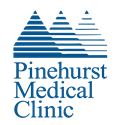January 30th, 2023

Get Your Groove Back, Help Your Heart’s Rhythm
By: Dr. Joan Maradey, a board-certified cardiac electrophysiologist
You may have been told you don’t have the best rhythm; however, everyone has one form – in their hearts. Similar to moving to the beat of your favorite song, your heart might also have rhythm abnormalities, or arrhythmias, causing diagnoses such as atrial fibrillation, or AFib, atrial flutter, supraventricular tachycardias (SVT), or bradycardia. That’s where an electrophysiologist, like a dance teacher, can help get your rhythm back on track.
Electrophysiology (EP) is a subspecialty of cardiology that focuses on abnormal heart rhythms. An EP provider completes additional training after a general cardiology fellowship where they learn how to implant pacemakers, the medical management of heart rhythm disorders and perform ablations.
Here in the Sandhills, the most common arrhythmia diagnosis I see is AFib. The American Heart Association (AHA) defines AFib as, “a quivering or irregular heartbeat (arrhythmia) that can lead to blood clots, stroke, heart failure, and other heart-related complications.” It tends to develop over time and our chances of AFib increases as we age. According to the AHA, those with high blood pressure, underlying heart disease, who drink alcohol, who have a family history of AFib, sleep apnea, and other chronic conditions are at a higher risk for AFib. Initially, it occurs in short spurts and can eventually lead to permanent AFib.
Symptoms of AFib can include fatigue and exhaustion, dizziness, and faintness. An electrocardiogram, or ECG, is performed to diagnose but usually symptoms accompany the ECG findings.
After being diagnosed with AFib, the most important thing to do is protect yourself from a stroke and that is usually done by taking a blood thinner. After that is addressed, the next step is to control your heart rate which AFib typically increases. An EP provider may also suggest treating the origin of AFib with medications called antiarrhythmics, or with ablation.
Another common condition I see in patients is bradycardia or slow heart rate. The AHA states that in general adults should have a resting heart rate no lower than 60 beats per minute. If someone’s resting heart rate falls below that threshold, they are considered to have bradycardia.
Bradycardia develops over time and can be caused by the natural deterioration of the electrical fibers in the heart or by medication. Like AFib, bradycardia is also diagnosed by an ECG. If a diagnosis of bradycardia is symptomatic and irreversible, then a pacemaker may be an option for treatment.
Keeping your heart rhythm strong benefits not only the electrical components but also the arteries around your heart. Exercise is one of the best ways to do this. A consistent, not necessarily rigorous exercise schedule can help. It is recommended that all adults get at least 150 minutes of moderate exercise a week.
Joan Maradey, MD, is a board-certified cardiac electrophysiologist at FirstHealth Cardiology – Pinehurst Medical Clinic.
Back





